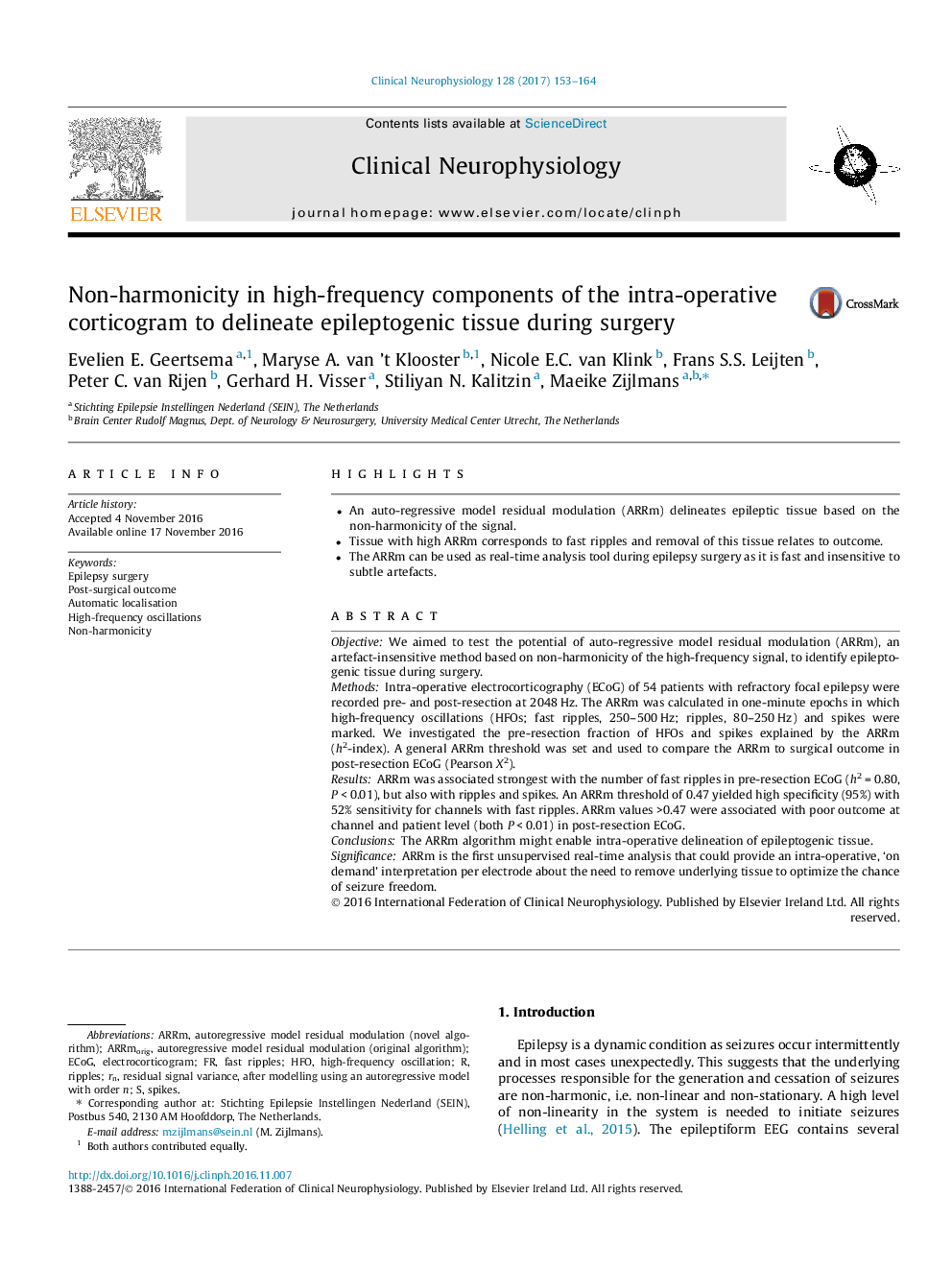| Article ID | Journal | Published Year | Pages | File Type |
|---|---|---|---|---|
| 5627437 | Clinical Neurophysiology | 2017 | 12 Pages |
â¢An auto-regressive model residual modulation (ARRm) delineates epileptic tissue based on the non-harmonicity of the signal.â¢Tissue with high ARRm corresponds to fast ripples and removal of this tissue relates to outcome.â¢The ARRm can be used as real-time analysis tool during epilepsy surgery as it is fast and insensitive to subtle artefacts.
ObjectiveWe aimed to test the potential of auto-regressive model residual modulation (ARRm), an artefact-insensitive method based on non-harmonicity of the high-frequency signal, to identify epileptogenic tissue during surgery.MethodsIntra-operative electrocorticography (ECoG) of 54 patients with refractory focal epilepsy were recorded pre- and post-resection at 2048Â Hz. The ARRm was calculated in one-minute epochs in which high-frequency oscillations (HFOs; fast ripples, 250-500Â Hz; ripples, 80-250Â Hz) and spikes were marked. We investigated the pre-resection fraction of HFOs and spikes explained by the ARRm (h2-index). A general ARRm threshold was set and used to compare the ARRm to surgical outcome in post-resection ECoG (Pearson X2).ResultsARRm was associated strongest with the number of fast ripples in pre-resection ECoG (h2Â =Â 0.80, PÂ <Â 0.01), but also with ripples and spikes. An ARRm threshold of 0.47 yielded high specificity (95%) with 52% sensitivity for channels with fast ripples. ARRm values >0.47 were associated with poor outcome at channel and patient level (both PÂ <Â 0.01) in post-resection ECoG.ConclusionsThe ARRm algorithm might enable intra-operative delineation of epileptogenic tissue.SignificanceARRm is the first unsupervised real-time analysis that could provide an intra-operative, 'on demand' interpretation per electrode about the need to remove underlying tissue to optimize the chance of seizure freedom.
